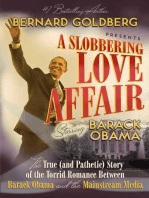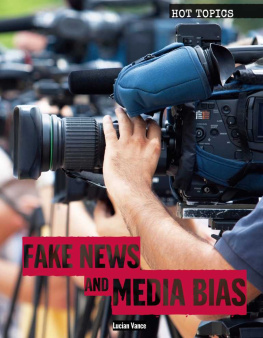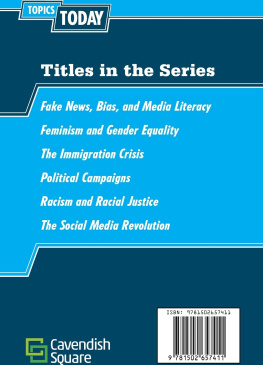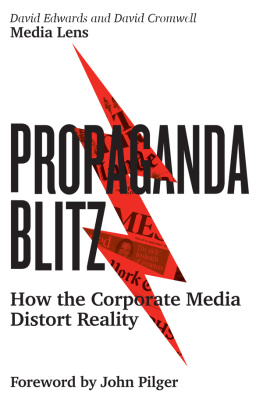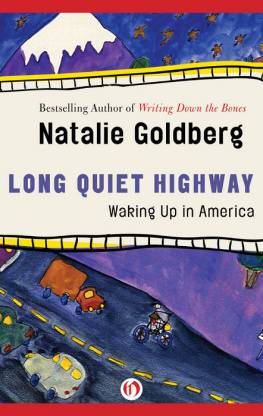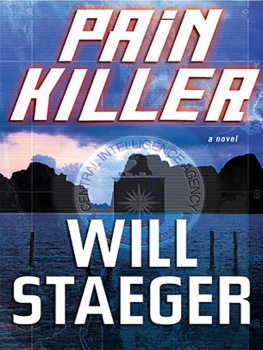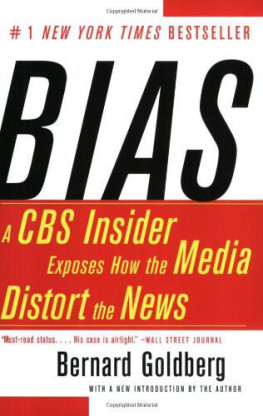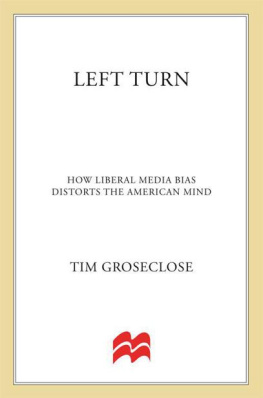

Copyright 2001 by Medium Cool, Inc.
All rights reserved. No part of this publication may be reproduced or transmitted in any form or by any means electronic or mechanical, including photocopy, recording, or any information storage and retrieval system now known or to be invented, without permission in writing from the publisher, except by a reviewer who wishes to quote brief passages in connection with a review written for inclusion in a magazine, newspaper, website, or broadcast.
First ebook edition 2014
eISBN 978-1-59698-148-5
The Library of Congress has cataloged the hardcover edition as follows:
Goldberg, Bernard, 1945
Bias : a CBS insider exposes how the media distort the news / Bernard Goldberg. p. cm.
1. JournalismObjectivity. 2. Television broadcasting of newsUnited States. I. Title.
PN4784.O24 G65 2001
302.23dc21
2001048378
Published in the United States by
Regnery Publishing
A Salem Communications Company
300 New Jersey Ave NW
Washington, DC 20001
www.Regnery.com
Distributed to the trade by
Perseus Distribution
250 West 57th Street
New York, NY 10107
Manufactured in the United States of America
10 9 8 7 6 5 4 3 2 1
Books are available in quantity for promotional or premium use. For information on discounts and terms, please visit our website: www.Regnery.com.
FOR NANCY
Because she never wavered when things got dark and always understood why I had to do it... and mostly because my life wouldnt be nearly as much fun if she werent in it
AND FOR BRIAN AND CATHERINE
Who bring me more joy than they know and who, without even trying, put everything into perspective for me
AND FOR MY MOTHER AND FATHER
When it comes to arrogance, power, and lack of accountability, journalists are probably the only people on the planet who make lawyers look good.
Steven Brill
CONTENTS
On September 11, 2001, Americas royalty, the TV news anchors, got it right. They gave us the news straight, which they dont always do. They told us what was going on without the cynicism and without the attitude. For that, they deserve our thanks and our admiration.
But it shouldnt take a national catastrophe of unparalleled magnitude to get the news without the usual biases. Before September 11, the media elites, too often, behaved badly. And they will again. It is, after all, who they are. And that is what this book is all about.
I grew up addicted to the news, starting in an era when newspapers had already begun their slow decline, and television news meant the Big Three network broadcasts, or chatty local hosts talking about traffic and weather. At ten, the Watergate hearings fascinated me, and I kept up with the story in the Santa Ana (now Orange County) Register. Three years later, I followed the delegate chase in the Republican presidential nomination in newspapers and Time magazine, gaming out the state-by-state possibilities, and experiencing my first political heartbreak when Ronald Reagan narrowly lost the nomination to Gerald Ford.
My second political heartbreak, needless to say, came a few months later. Most of my freshman classmates had rooted for Jimmy Carter, but my only consolation was that they knew next to nothing about the issues and the politics of the day. It took me years to realize that the same was true for many of the adults who actually had a vote, too... and years after that to link that ignorance to the pervasive media bias Bernard Goldberg exposed in Bias.
Any news magazine that got left lying around became fodder for my voracious reading appetitesometimes front to back, or oddly, more than occasional back-to-front readings. Early in my news-addict life, I had begun looking at news from different angles, and compared notes between the coverage provided by Time and Newsweek, and local papers like the Register, the Los Angeles Times, and the now-defunct Los Angeles Herald Examiner. Reporting in print provided comparisons to that provided by radio and television, especially the national-network broadcasts.
Even with this experience, the concept of media bias didnt coalesce into my news-addict mind until CBSs 60 Minutes did a whistleblower feature on my fathers employer, a leading government contractor in space and defense programs. The segment argued that the firm discriminated in its human-resource management based on complaints from two menone of whom had been fired and the other passed up for promotion. The jewel of the CBS News division apparently thought that two anecdotes equaled a trend and a national story, and my father hit the roof after watching the show. The 60 Minutes reporter didnt bother to dig into the claims of either men, which to this day Dad says were bogus, and didnt give his employer a fair opportunity to answer the charges. My father had been a regular viewer of 60 Minutes until then, but ever after proclaimed the show sixty minutes worth of crap.
Dads disillusionment became my education. After that, my news appetite became tempered with the need to parse the reporting critically, and to look for multiple sources. Not that many existed at that time, in the early-to-mid 1980s. Even for those with cable television and access to CNN (which was hardly universal in that period), a daily-news consumer had the same choices as had been available in the past few decades: one or two local newspapers and local radio and television broadcasters for hard news, plus the Big Three broadcast networks and their evening news broadcasts. Wire service stories got filtered through the layers of editors and publishers at those outlets. The gatekeepers had control of the flow of information, and comparative shopping wasnt even an option, let alone a luxury.
Even when editorial bias became clear, consumers had very little power to challenge it. Newspapers printed letters to the editor, but the same editors who made the decisions on publication and reporting approach also decided which letters got printedand how much of those letters would get cut, too. Local stations occasionally offered rebuttal time to viewers, but generally only to editorials offered earlier by station management. In my local area of Los Angeles, KABCs John Severino took this seriously and allowed intelligent rebuttals. For most stations, though, the process of selecting rebuttals to air became such a farce that Saturday Night Lives Gilda Radner turned it into a running gag in the mid-1970s. As Emily Litella, the late, brilliant Radner would offer an absurd non-sequitur response to a perfectly reasonable editorial, based on some simple misunderstanding of its subject matter. Once corrected, Litella would smile sweetly into the camera and say, Never mind!
If any cultural reference exists that better depicts the contempt editors had for their audience and critics, I have yet to find it.
In short, this was a bleak period for a discerning news consumer, especially one whose politics didnt match up with the prevailing liberal editorial slant. All this began to change in the late 1980s. The end of the FCCs Fairness Doctrine reinvigorated the declining AM radio commercial industry, and a new distribution method for information arose: talk radio. Rush Limbaugh dominated the market, but a number of fresh voices appeared to provide alternative channels for news, and also for editorial criticism of news outlets. Thanks to their access to a broader range of news outlets but also to an avalanche of tips from listeners who shared their frustration, these talk-radio hosts became an outlet for the disillusionment and dissatisfaction with the news media. Millions tuned in to hear these stars of New Media take on the Brahmins of the Old Media.
Next page

